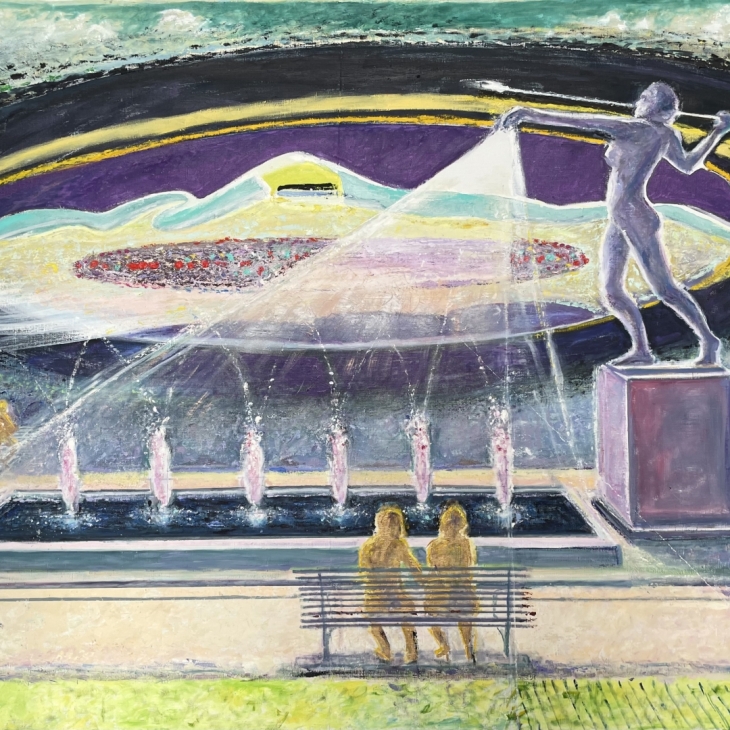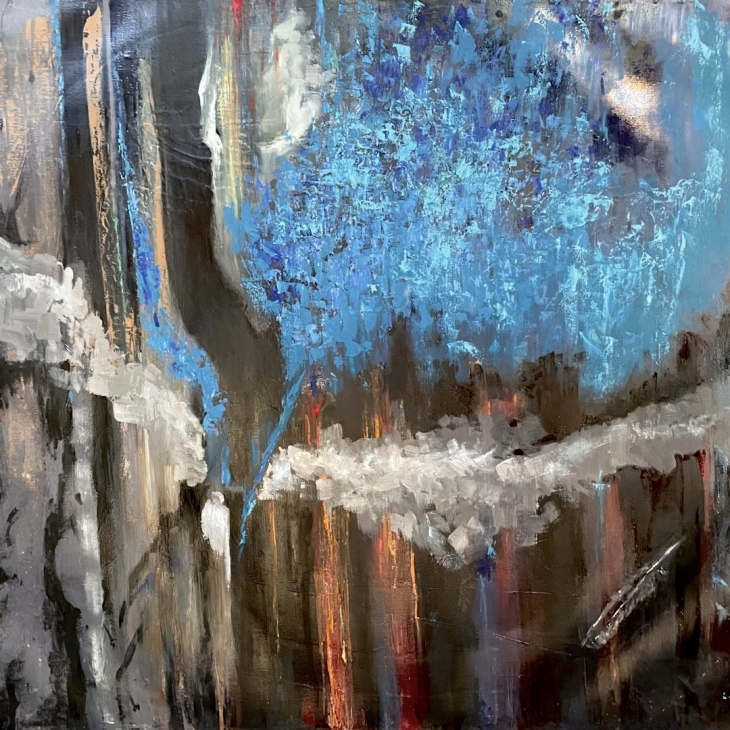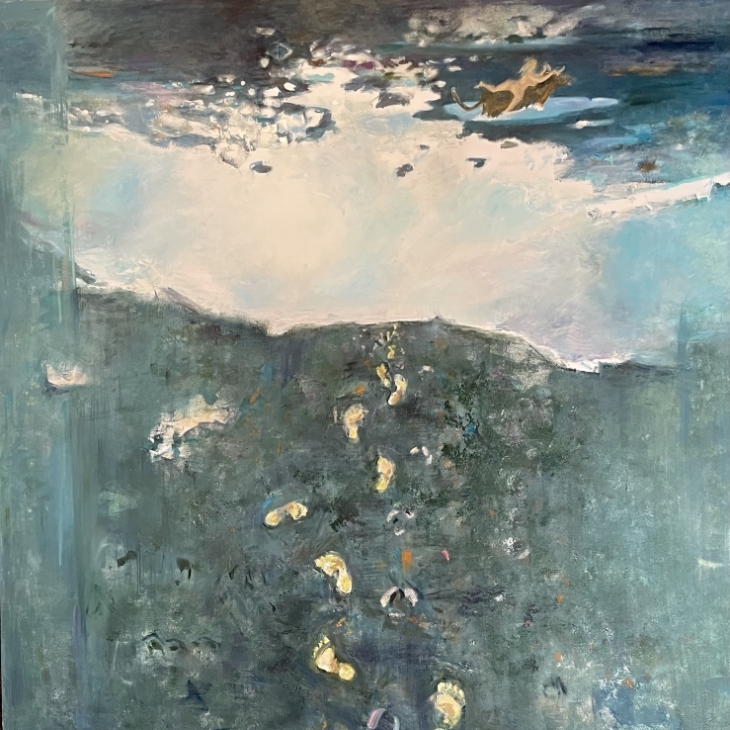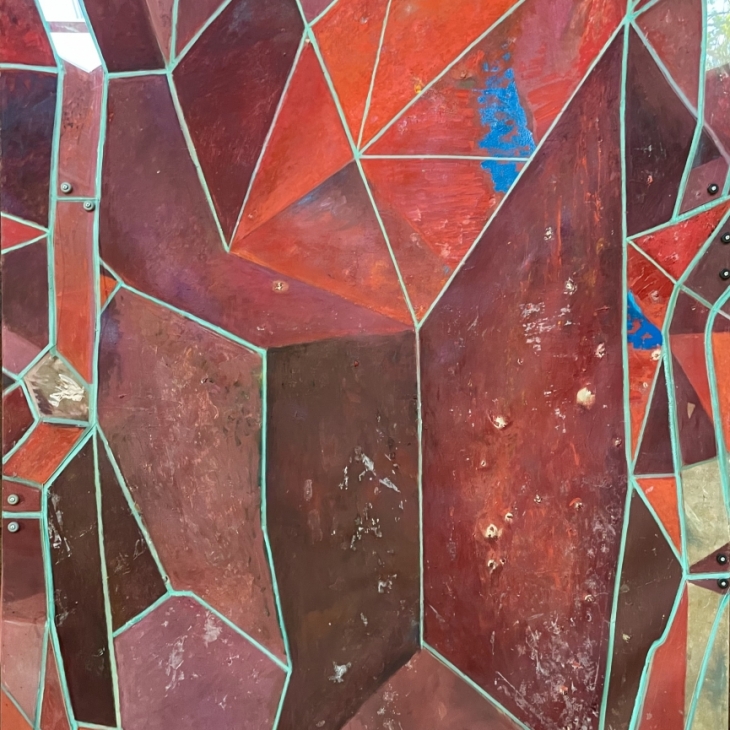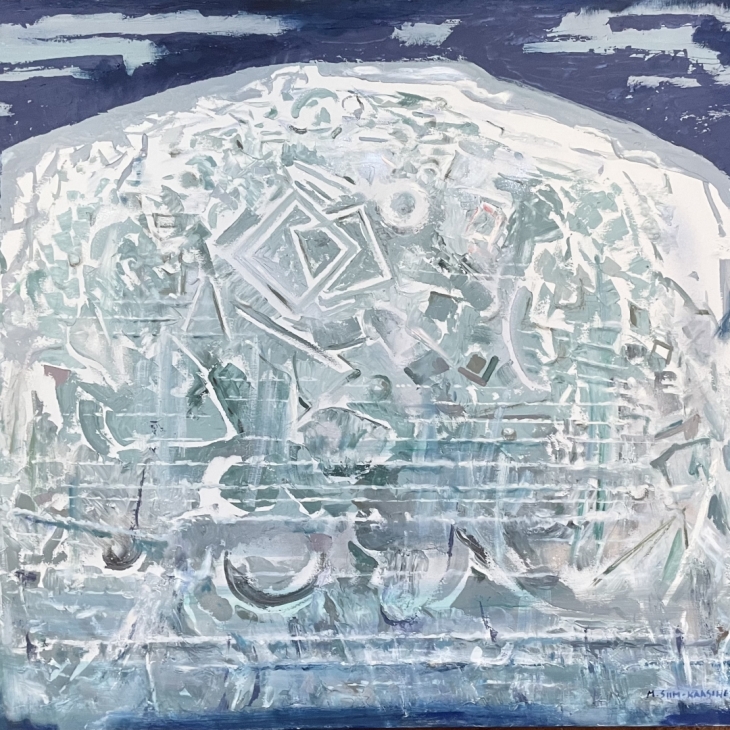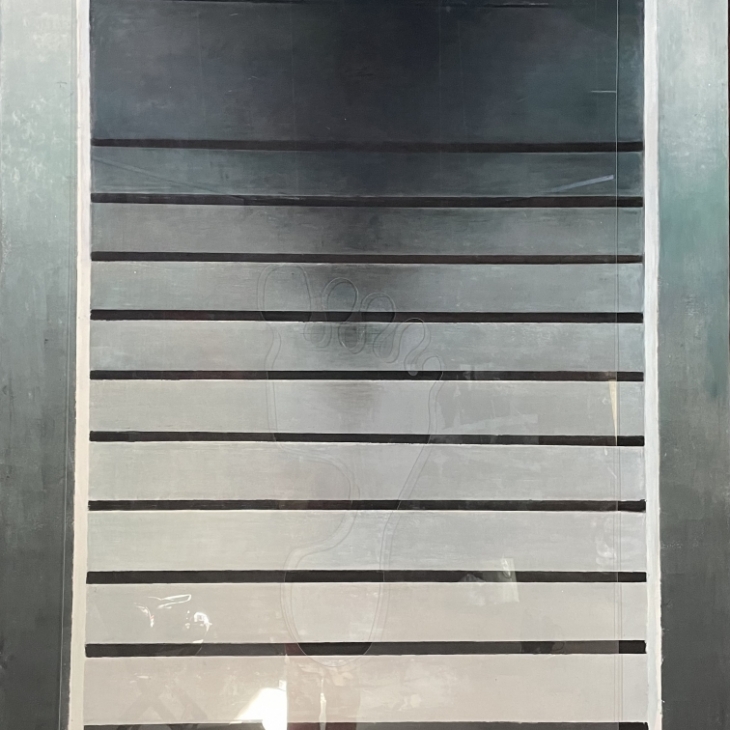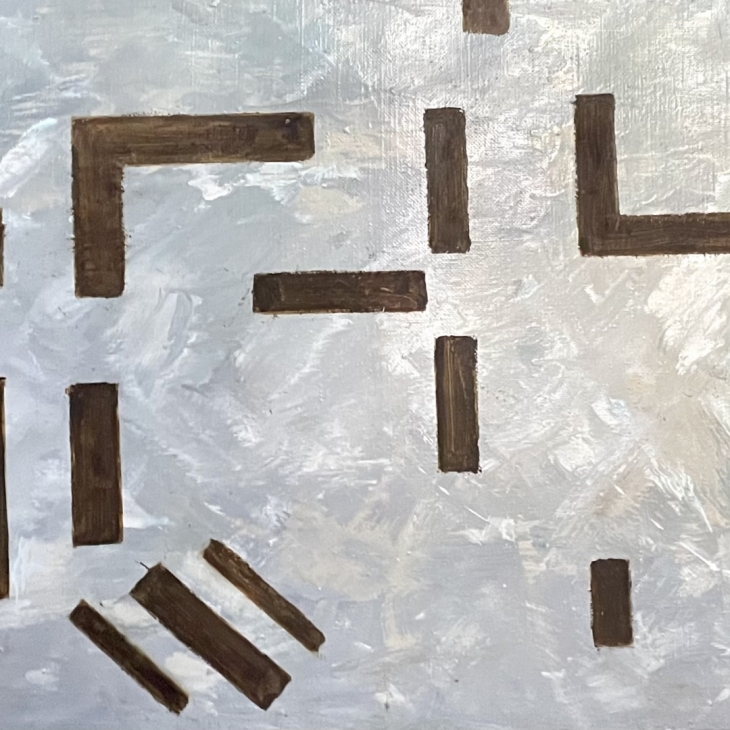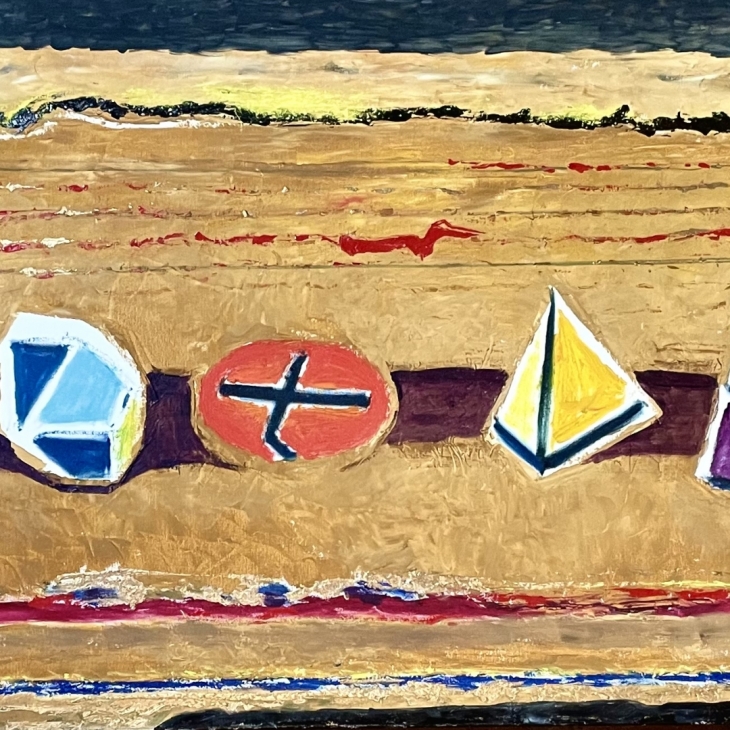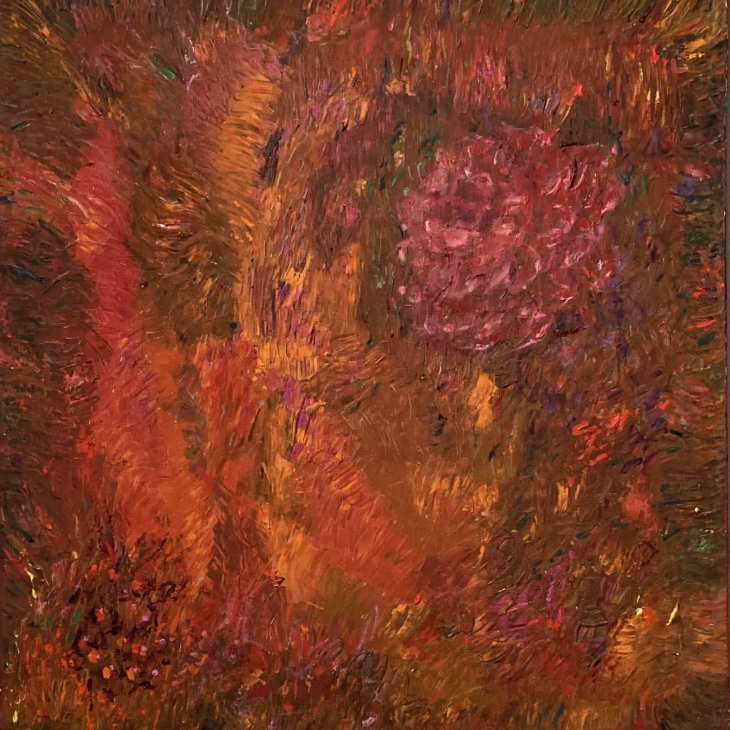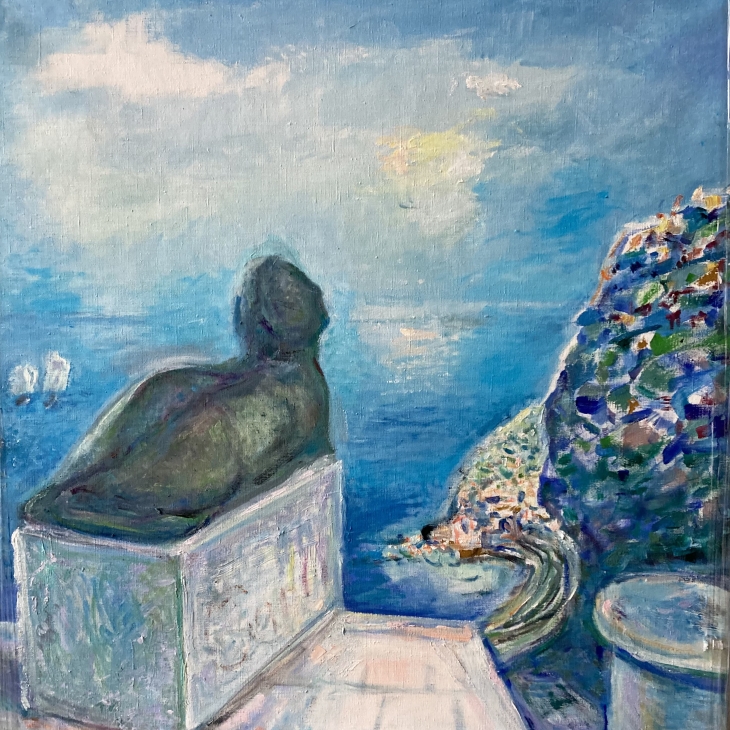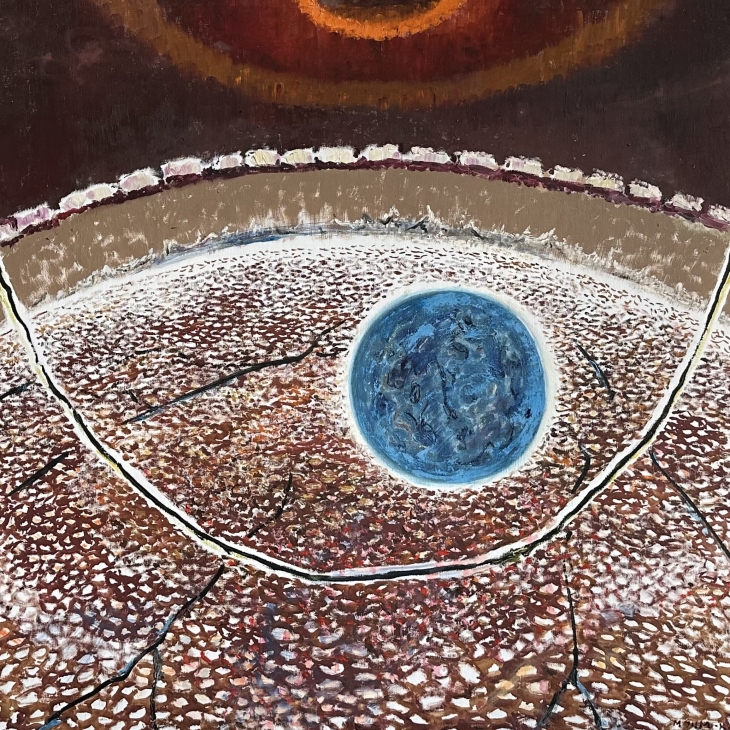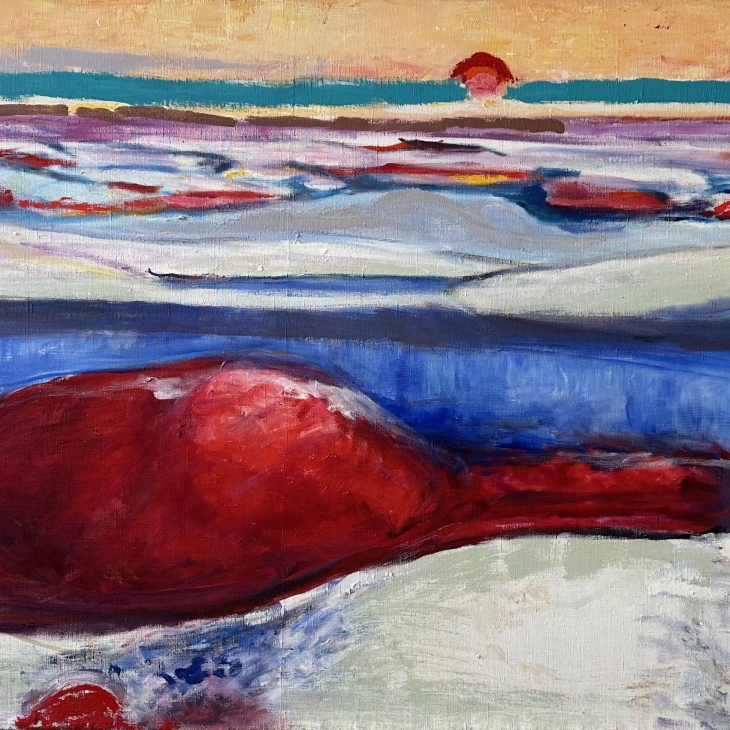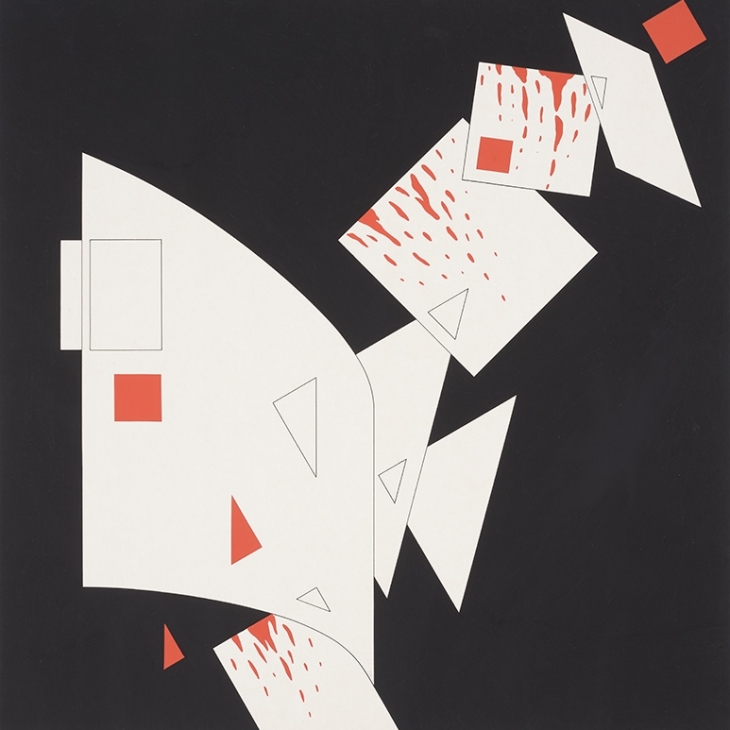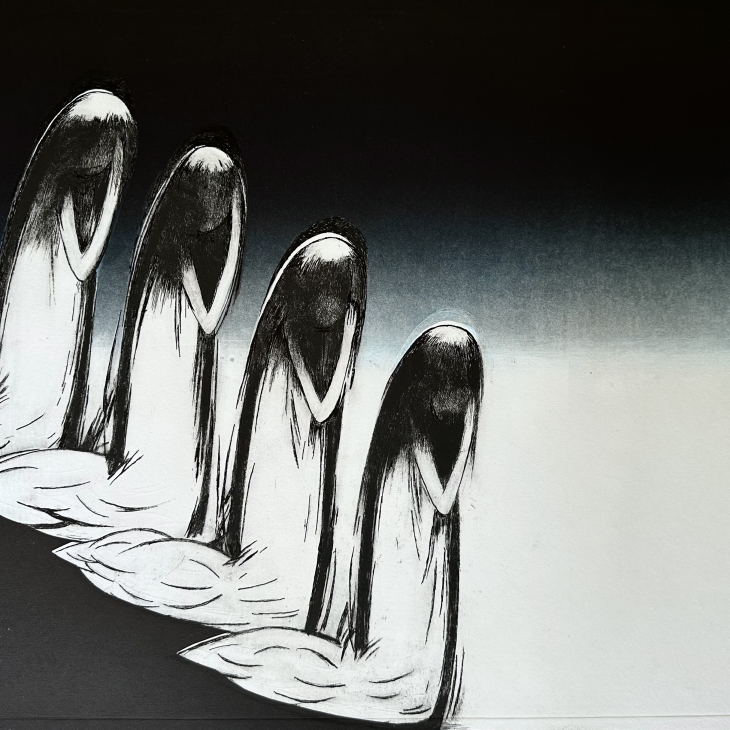Ludmilla Siim-Kaasinen
Artist is based in: Estonia
Ludmilla Siim was born on 20 November 1938 and until 1945 lived in Alma-Ata, Kazakhstan. Ludmilla’s memories of Alma-Ata are mostly associated with her mother and the botanical gardens, and with her father and reading books. She enjoyed spending time with books, either reading or having her father read to her. The books were quite diverse, from fairy tales to American literature to Greek mythology. The influence of the latter can be found in the artist’s oeuvre.
The artist’s mother, who was from Estonia, longed for the homeland of her childhood, and so the family arrived in Tartu, that had been ravaged by World War II, at the beginning of the spring of 1945. Ludmilla began her studies at Tartu’s School #2 (currently Miina Härma Gymnasium), but in 1953, due to conflicts with her classmates and on her mother’s machination, she transferred to the Tartu School of Visual Arts.
Ludmilla graduated in 1958 from the Tartu School of Visual Arts with honours. The only opportunity to continue her studies and receive a higher artistic education was to attend the Estonian State Art Institute in Tallinn, but she hadn’t decided yet which speciali-sation to choose. The decision to study painting was made for her.
In 1965, Ludmilla started teaching art in School #46 of Tallinn (currently Tallinn Pelgulinn Gymnasium). Among the students at School #46 were the future painter Andres Tolts (1949–2014), the painter and later video artist Ando Keskküla (1950–2008), the painter Urmas Pedanik (b 1949) and the architect, installation art- ist and printmaker Jüri Okas (b 1950). After her compulsory work as a teacher, Ludmilla received her diploma, started her career as a freelancer and entered the Estonian art life at the end of the 1960s. Until her departure from Estonia in 1977, she had a lot of influence on Estonian art, and the art life of the 1970s cannot be covered without mentioning her. That decade is characterised by depictions of urban landscapes and urbanised en- vironment. Her works from that time were influenced by pop art, hyperrealism and surrealism. They focus on space and people. Fig- ures are usually in the foreground and the space behind them seems to stretch out infinitely. When Ludmilla lived in Estonia, she was a renowned artist who par- ticipated in numerous local and pan-Soviet exhibitions. Leaving Es- tonia closed a very important chapter in Ludmilla’s life. Due to her departure, she was included in the list of artists who were forbidden in the USSR. She was erased from the cultural and artistic memory until the 1990s, when the Soviet Union collapsed and she could once again participate in exhibitions in Estonia. Ludmilla Siim’s membership in the Estonian Painters Association was restored only in 2005. In Finland, she had to adapt to new artistic standards since fig- urative painting was not popular. Ludmilla described the start of her life in Finland in an earlier interview: “My world view remained the same but the question was how to make myself artistically visible. The approach I had used to exhibit in Tallinn was not acceptable in Fin- land, and they didn’t understand the things happening in Estonia. Art was ruled by restrained minimalism, which was definitely non-figura- tive since people were not depicted. This had an influence on me since I saw that easier imagery can be used to reach artistic truths.”1 Ludmilla was generally successful in adapting to living in Fin- land. From 1989 to 2003, she was a teacher at the centre for adult courses at the Helsinki Artists’ Association. From 1992 to 2000, she taught art at the Munkkiniemi community centre (Munkkiniemen monitoimitalo), and from 1996 to 2020, at the Finnish Centre for Pensioners (Eläketurvakeskus). Besides teaching, which became full time at the end of the 1980s, continuing into the 1990s, Ludmilla was named in 1992 as a member of the exhibition committee of the Helsinki Artists’ Asso- ciation. She held this position until 2000. In 1998, she was elected to the board of the association for two years. The period 2000–2020 was characterised by Siim’s active participa- tion in exhibitions: altogether there were seventeen solo and group exhibitions, including eight in Estonia. One of the most significant in Estonia was the 2011 double exhibition with Jüri Palm in the Kumu Art Museum Alone in the City. Ludmilla Siim and Jüri Palm, cura- ted by Liisa Kaljula and Eha Komissarov. This was Ludmilla’s first large retrospective. A significant contribution to presenting Ludmilla’s oeuvre has been made by the private collector Mart Lepp, whose collection contains a number of her works and who curated her exhibitions in the Tallinn Central Library (2019) and in the art gallery of the Estonian Parliament (2020), which have kept Ludmilla visible in Estonian art life. Ludmilla Siim is an artist with an intriguing life. She is a diverse author who has adapted to different styles and themes. Her creative biography contains over four hundred works and she has participated in more than forty exhibitions.
Information from Tartu Art Museum. Ludmilla Siim. The Glimmer of Being exhibition booklet

